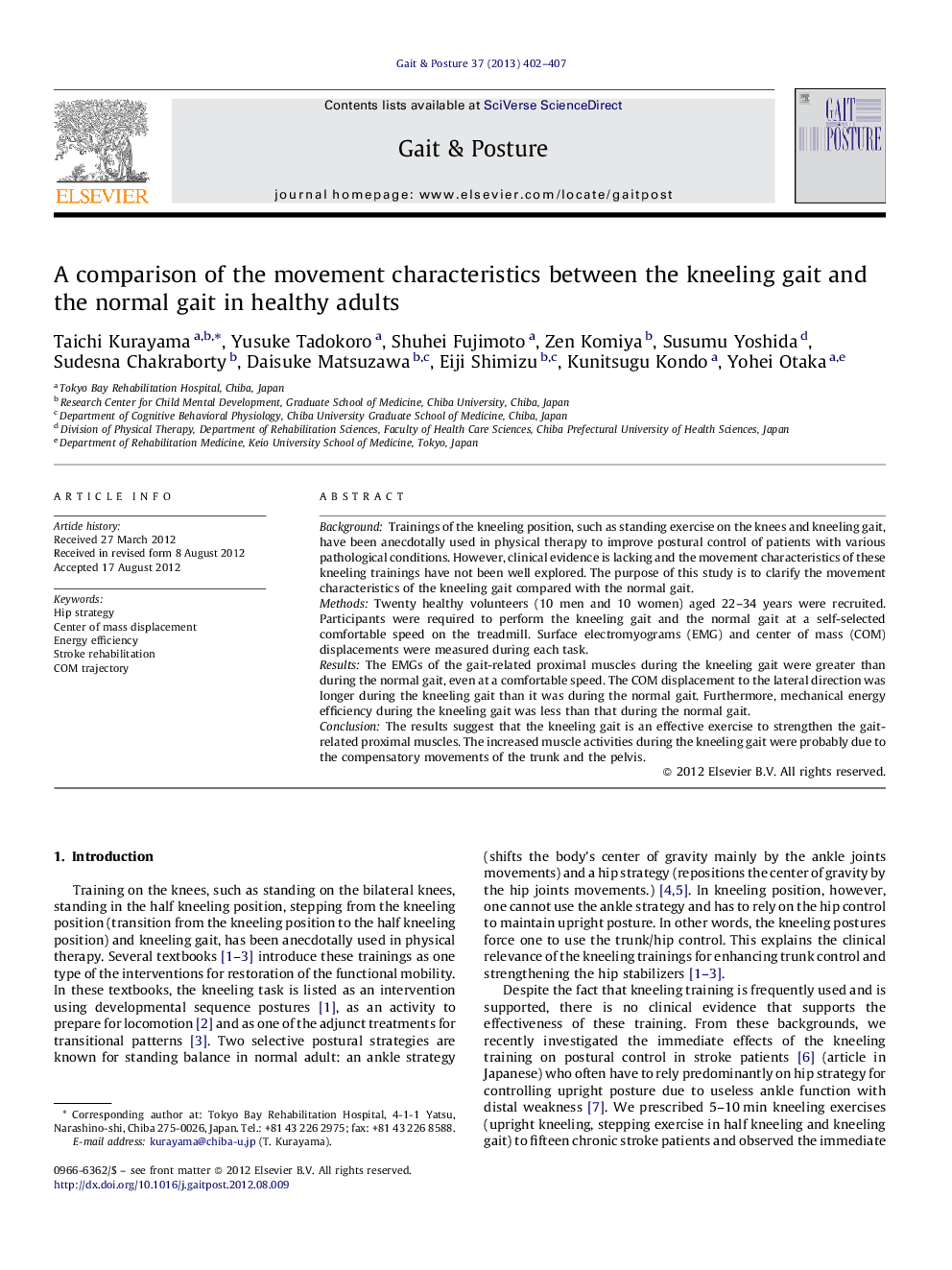| Article ID | Journal | Published Year | Pages | File Type |
|---|---|---|---|---|
| 6207575 | Gait & Posture | 2013 | 6 Pages |
BackgroundTrainings of the kneeling position, such as standing exercise on the knees and kneeling gait, have been anecdotally used in physical therapy to improve postural control of patients with various pathological conditions. However, clinical evidence is lacking and the movement characteristics of these kneeling trainings have not been well explored. The purpose of this study is to clarify the movement characteristics of the kneeling gait compared with the normal gait.MethodsTwenty healthy volunteers (10 men and 10 women) aged 22-34 years were recruited. Participants were required to perform the kneeling gait and the normal gait at a self-selected comfortable speed on the treadmill. Surface electromyograms (EMG) and center of mass (COM) displacements were measured during each task.ResultsThe EMGs of the gait-related proximal muscles during the kneeling gait were greater than during the normal gait, even at a comfortable speed. The COM displacement to the lateral direction was longer during the kneeling gait than it was during the normal gait. Furthermore, mechanical energy efficiency during the kneeling gait was less than that during the normal gait.ConclusionThe results suggest that the kneeling gait is an effective exercise to strengthen the gait-related proximal muscles. The increased muscle activities during the kneeling gait were probably due to the compensatory movements of the trunk and the pelvis.
⺠Compared movement characteristics of the kneeling gait and the normal gait. ⺠Increased muscle activity was observed in the kneeling gait. ⺠The kneeling gait might be an effective exercise to strengthen the gait-related proximal muscles.
